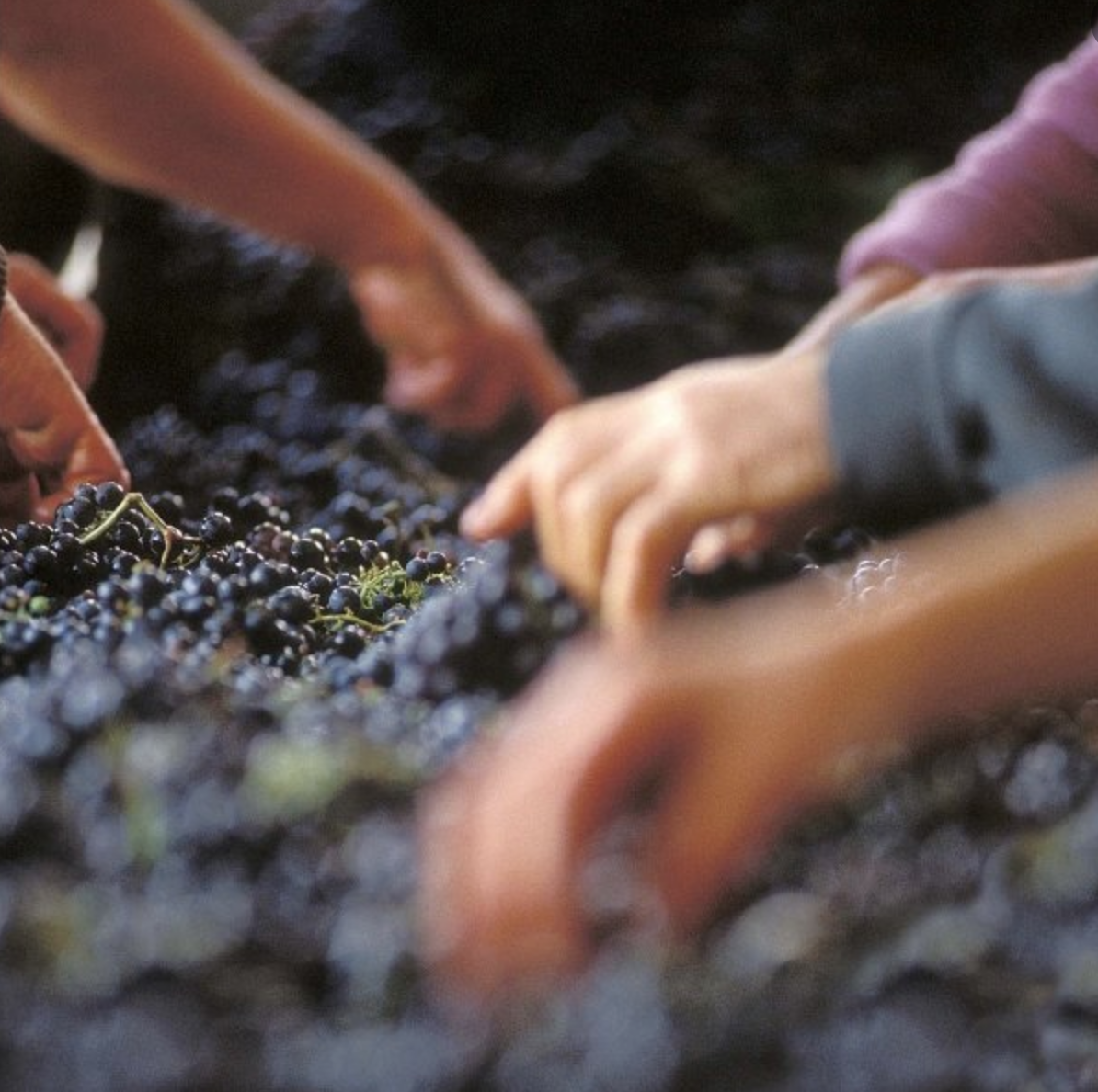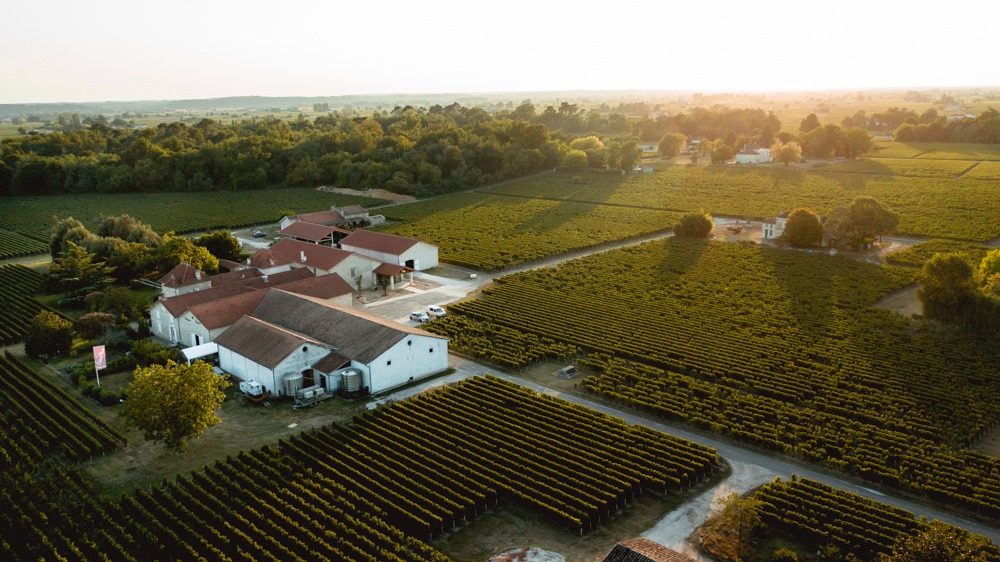Château Pipeau is nestled amidst the undulating vineyards of the Saint-Émilion appellation on the Right Bank. The name, derived from the French term "pipeau" meaning "fife" or "flute," evokes a harmonious resonance between the land and the artistry of winemaking.
The estate's vineyards, spanning over 25 hectares of prime Bordeaux soil, flourish under the temperate maritime climate, with the vines basking in the gentle sunlight and benefiting from the cooling influence of nearby rivers. Merlot, Cabernet Franc, and Cabernet Sauvignon with an average vine age of 40 years are cultivated at Château Pipeau, each contributing its unique personality to the final blend.
Grape Collective talks with fourth-generation winemaker Jean Mestreguilhem about the unique character of Saint-Émilion wines.
Christopher Barnes: Talk a little bit about Château Pipeau. What's the history of the estate?
J ean Mestreguilhem: It's the story of our family, because Pipeau has been created by my great-grandfather. So now, I represent the fourth generation. But it's my great-grandfather who created the brand and the first label of Château Pipeau in 1929, so almost a hundred years now.
ean Mestreguilhem: It's the story of our family, because Pipeau has been created by my great-grandfather. So now, I represent the fourth generation. But it's my great-grandfather who created the brand and the first label of Château Pipeau in 1929, so almost a hundred years now.
(Jean Mestreguilhem)
And where exactly is Château Pipeau in Bordeaux?
Château Pipeau is in the Saint-Émilion appellation. So the right bank of Bordeaux. And, inside Saint-Émilion we are at the bottom of the hill on the east side Saint-Émilion, with an east, southeast, aspect.
Explain why Saint-Émilion is one of the key winemaking areas in Bordeaux. What is it about the soils, the terroir there that make it a really special place to make wine?
Saint-Émilion is one of the oldest areas where we make wine. And Saint-Émilion is also one of the most diversified terroirs. There is a lot of difference in the terroir. And so because we make blends of this different terroir it makes wines with more complexity and it's what we like in our wines.
Can you talk a little bit about the blend? So obviously it's a Merlot-based blend, but how does it change every year?
It's always mostly Merlot actually. Château Pipeau is 90% Merlot, 5% Cabernet Franc and 5% Cabernet Sauvignon. But, what is specific to Château Pipeau is, we make only one label, and the final blend corresponds to the whole vineyard. That's why the proportion of the different grape varieties is pretty much the same for every vintage. The Merlot is the grape variety we prefer, same with my father, my grandfather and my great-grandfather also.
So they've always been doing 95%, 5% and 5%?
 In the past moments there was a little bit more of Cabernet Franc. But, yes, we specialize in Merlot so that's why we reached that. Now I'm working back again on the Cabernet Franc, because I want to improve this part of our blend. And with the climate becoming warmer and warmer, Cabernet Franc is a good choice for the future. So that's why I want to increase a little bit in the future, the proportion of Cabernet Franc. But before that, I'm planting some new varieties of Cabernet Franc and want to try and make sure that they are very good before we plant more. And for the moment, where we are the best is, you know, our Merlot.
In the past moments there was a little bit more of Cabernet Franc. But, yes, we specialize in Merlot so that's why we reached that. Now I'm working back again on the Cabernet Franc, because I want to improve this part of our blend. And with the climate becoming warmer and warmer, Cabernet Franc is a good choice for the future. So that's why I want to increase a little bit in the future, the proportion of Cabernet Franc. But before that, I'm planting some new varieties of Cabernet Franc and want to try and make sure that they are very good before we plant more. And for the moment, where we are the best is, you know, our Merlot.
And what makes Merlot special in Bordeaux versus other parts of the world?
Merlot ripens faster than Cabernet Franc and mostly Cabernet Sauvignon. So to make a Merlot elegant and powerful, you need to ripen slowly. You don't want the climate to be too warm. Because otherwise the alcohol level would be too high and you can drop the acidity level so you then lose the good balance. We want the opposite. We want to keep a good balance, good as it should to live. And so for that we need the Merlot to ripen slowly. So we need a temperate climate and Bordeaux is exceptional for that. And also we have a lot of rain compared to other regions that make Merlot.
Talk about the terroir.
We have different types of terroir. We have different soil types. Mostly, clay and limestone because we are at the bottom of the hill, then, clay with sand and deep sand. The different blocks change between these three types of terroirs. More clay with cooler soil, so it will ripen slower, making more freshness with a bit more alcohol in the wine. And the opposite is the deep sand, the warmer soil. So it will ripen faster. It makes more ripe fruit flavors and a smoother finish. And, we blend all of these to get the combination of the three. So what we have at the same time are powerful wines with elegant tannins, a long finish, and this fresh smoothness. The tannins are not too dry. It is a blend of all this terroir.
Talk a little bit about the philosophy of winemaking at your estate.
Yes, we are really focused on our customer. We want to make wine that people will enjoy drinking for every or every occasion. The first occasion is of someone who wants to buy and drink directly. So the wine needs to be nice, even young. But also we want to keep the tradition of Saint-Émilion wine with a good potential for aging.
So it can also age for a long time. At Pipeau we age at least ten years and up to 15 years, if you like, or more. So we want to make the wine have both this sophistication. You can age, but also it is good to drink young as the fruit is open and aromatic from the beginning.
And what about your barrel usage?
Yes we have a specific process for that. Well, we use only new barrels. So we change the barrels for every vintage.
We age the wine 12 months in the barrels. But I play a lot with the toasting style. I work with four different barrel makers, and I have at least two or three different toasting styles. And I really adapt the toast with the vintage. For the big vintage that is very warm, very powerful I will use more toasted barrels for example. And for vintages with a bit more elegance, less tannic but more fruit, we will use barrels with toast at a lower temperature, but for a longer time. It will give a less oaky taste but express more the fruit and the aromatics, a bit more vanilla and softer.
So, always new but different and always adapting to the vintage. And next to that, I always keep a small batch in tanks. So after aging in the barrels, I can adjust the blend with some of the wine that stayed in the tanks if we need to balance the fruits with the wood flavors. Because we always want the final wine to be a balance between the fruit and the wood. We don't want the wine to be over-oaked.
Talk a little bit about your philosophy of viticulture.
 I like to keep the traditional method. So we still prune with the same style as we do, as my great-grandfather did.
I like to keep the traditional method. So we still prune with the same style as we do, as my great-grandfather did.
Has your viticulture changed over time?
Yes, it changes mostly because of the climate, especially in these last years that were much warmer. And so we need to adapt to get the fruit still balanced. For example we start to reduce the exposure of the grapes to the sun. We do less de-leafing compared to before to protect the grapes from the sun more, specifically when the sun is very hard in the middle of the day.
So less de-leafing and then picking earlier. We pick much, much earlier than we used to. And the 2022 vintage we picked on the 3rd of September, which is our record. So it is changing. Yes, we need to adapt to this to keep a balanced fruit.
Talk a little bit about your background as a winemaker, because you've worked in some very interesting places.
Yes. After my studies I had the opportunity to travel and work in Napa at Screaming Eagle Winery. It was a wonderful experience for me and yes, I learned some specific methods that helped me a lot to improve what we have done over the many years. For example, keeping a good freshness and adapting to a warm climate is one thing. Protecting the grapes from the sun when it's too warm is one thing.
And then controlling oxidation with natural gas, with dry ice, for example, and nitrogen is something. We did a lot in Screaming Eagle and now I do it in Château Pipeau, and thanks to that, we control the oxidation much better. So we gain, in aromatics, in expressivity, and also we can reduce the dose of sulfites, which helps also for the aromatics. So now we have I think more expressive fruit and aromatics and have more elegant wines.
What was it like being involved with Screaming Eagle, which is such a famous brand around the world?
Yes, it was very, very exciting.The team was very young and of course the wines tasted amazing, and it was the first time I was flying to Napa and the chance to work in a place like this was an amazing experience. Just the material, installations were amazing and yes, the team was very precise in every process, very precise. And, there was no chance for mistakes. And I think that's how you make a great wine. It's when you are precise and you try to make every detail the best choice and to achieve, in the end, an exceptional product.
And, how big is Pipeau?
I make on average about 140,000 bottles, more or less. This last vintage we got hit by frost so it reduced our production a little bit. We are 25 hectares now. My great-grandfather started with three hectares so we have grown slowly.














